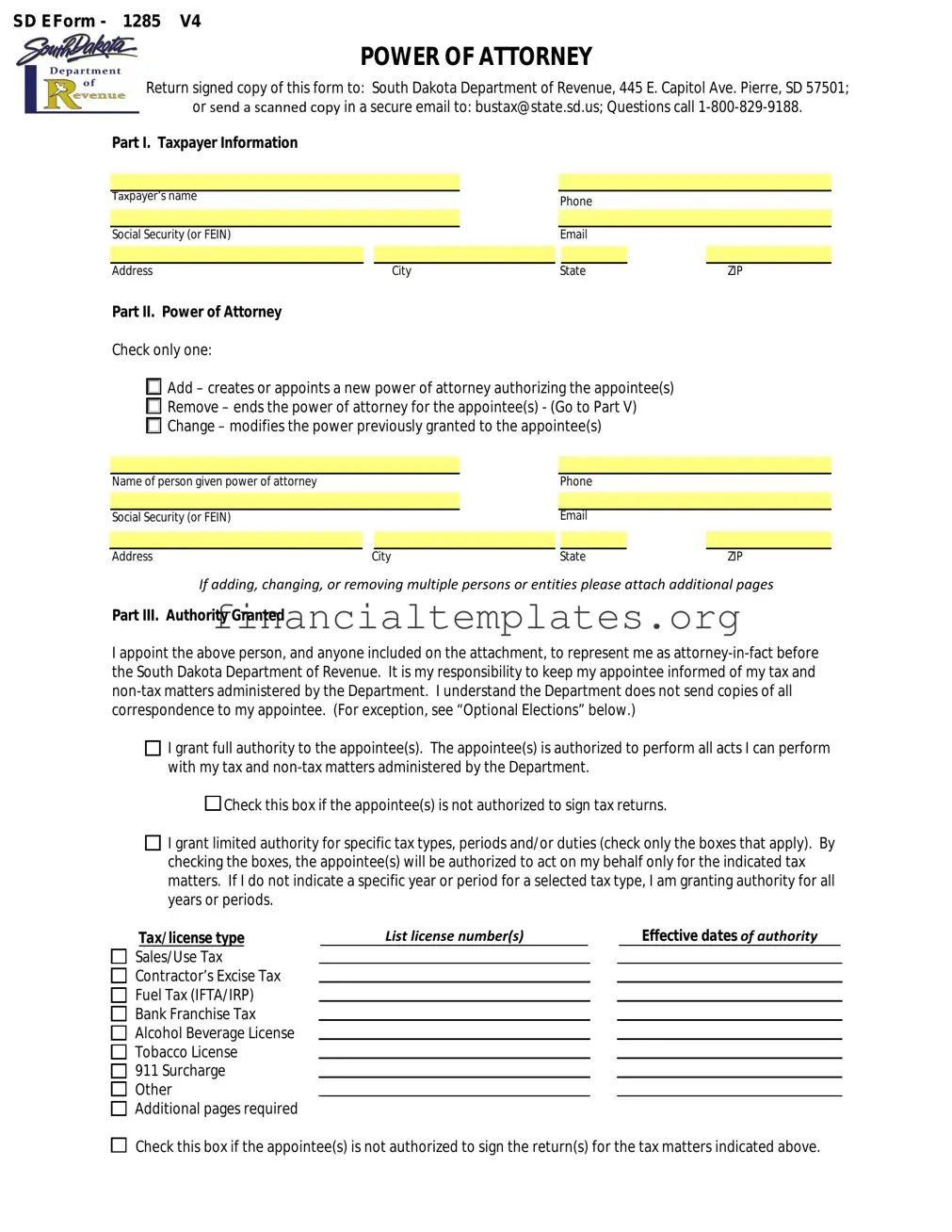The Tax Power of Attorney Form, similar to Form 2848 at the federal level, allows an individual to grant authority to another person to handle their tax matters. This form includes specifying details about which types of tax matters and for which years the representative can act. Its structure and purpose closely resemble the federal version, making it a vital tool for those needing representation before the IRS or state tax agencies.
Comparable to the Tax POA is the General Power of Attorney Form. This document grants broader powers to an agent, covering a wide range of affairs beyond just tax matters. It includes financial and legal decision-making powers, but, unlike the Tax POA, it's not limited to tax issues. This similarity lies in the fundamental concept of granting authority to another individual, although the General POA has a wider scope.
The Durable Power of Attorney Form shares the feature of assigning decision-making powers to another person. However, its distinction comes with its durability – it remains in effect even if the person who has granted the powers becomes incapacitated. This feature is crucial for long-term planning, contrasting with the Tax POA’s focus on specific tax-related tasks.
The Medical Power of Attorney Form is another document related in principle to the Tax POA, as it gives someone else authority to make healthcare decisions on the grantor's behalf. Though its domain is healthcare, not taxes, the core idea of assigning decision-making power to another remains consistent across both documents. This highlights how POA forms can cater to various aspects of a person’s life, from health to financial matters.
The Limited Power of Attorney Form parallels the Tax POA by also granting specific powers to an agent, but its applications span beyond just tax matters. This document can be customized to include various tasks, such as selling a car on the grantor's behalf, contrasting with the Tax POA’s exclusive focus on tax affairs. The similarity lies in the concept of granting authority for specified actions.
Another similar document is the Revocation of Power of Attorney Form, which is used to cancel a previously granted power of attorney. It serves as a critical control mechanism, allowing individuals to withdraw powers if situations change or if they're dissatisfied with the agent's actions. This document connects with the Tax POA by setting the groundwork for its potential revocation, underscoring the principle of changeable permissions in POA relationships.
The Advanced Healthcare Directive, sometimes known as a living will, is akin to the Tax POA by providing instructions or preferences for future actions, albeit in the realm of healthcare. It differs by focusing on healthcare decisions in anticipation of incapacity, rather than on financial or tax matters. The connection lies in the forward-looking nature of both documents, planning for circumstances when the individual may not be able to make decisions.
The Financial Information Release Form, similar in function to the Tax POA, specifically authorizes the release of an individual’s financial information to another party. This could include tax records, among other financial documents. While it focuses on the release of information rather than granting authority for actions, it underscores the theme of designated representation and privacy waiver found in the Tax POA.
The Estate Planning Power of Attorney, often part of a comprehensive estate plan, grants an agent authority to manage the principal’s estate matters. It can include tax issues related to the estate, making it relevant to the interests covered by the Tax POA. The estate planning aspect provides a focused application on managing and disposing of assets, resonating with the tax management objectives of the Tax POA.
Lastly, the Business Power of Attorney form empowers an agent to make business-related decisions and actions on behalf of the principal. This can encompass tax matters for the business, aligning it with the Tax POA's scope. The business orientation of this document highlights the multifaceted uses of POAs in professional contexts, extending the principle of delegated authority into the corporate realm.

